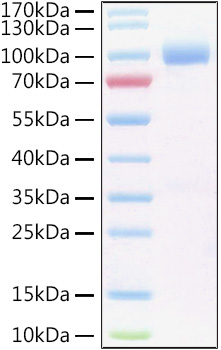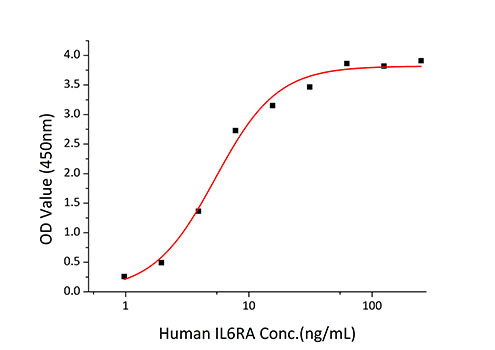The soluble form of recombinant human IL6R consists of 357 amino acids with a molecular weight of 40 kDa. It migrates with an apparent molecular mass of 60-65 kDa due to glycosylation in SDS-PAGE under reducing conditions. Interleukin 6 receptor (IL-6R) also known as CD126 (Cluster of Differentiation 126) is a potent pleiotropic cytokine that regulates cell growth and differentiation of various tissues, and is known particularly for its role in the immune response and acute phase reactions. The low concentration of a soluble form of IL-6 receptor (sIL-6R) acts as an agonist of IL-6 activity. In the IL-6R/CD126/IL6R system, both a membrane-bound IL-6R and a sIL-6R protein are able to mediate IL-6 signals into the cells through the interaction of gp13. The resulting IL-6/sIL-6R protein complex is also capable of binding to gp13 and inducing intracellular signalling. Through this so-called "trans-signalling" mechanism, IL-6 is able to stimulate cells that lack an endogenous mIL-6R. Dysregulated production of IL6 and IL6R are implicated in the pathogenesis of several inflammatory diseases and malignancies, and it has been reported that a humanized anti-IL6R monoclonal antibody is a promising agent applicable to the therapeutic approach for IL6 driven diseases.








